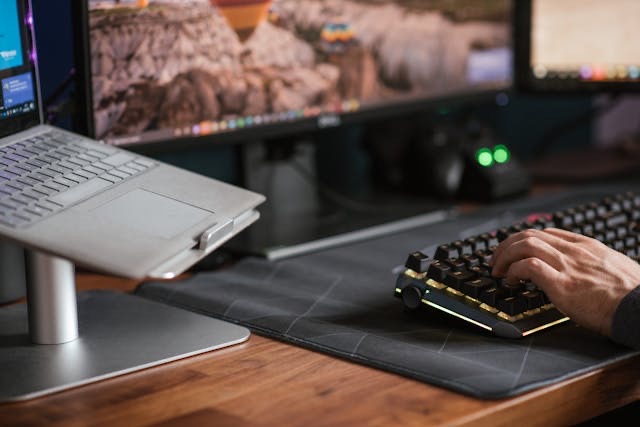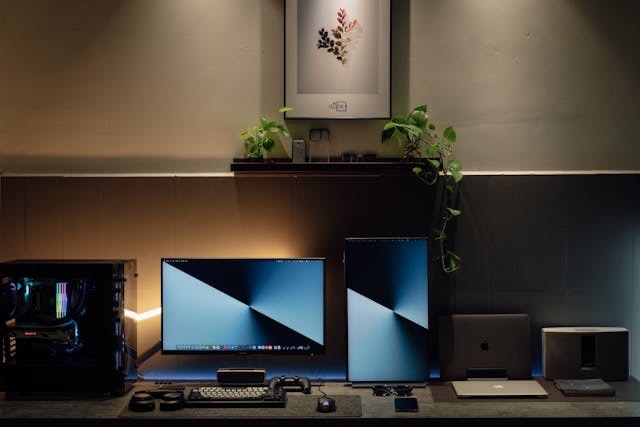Can you connect a 60hz Laptop to a 144hz Monitor?
Are you feeling confined by the visual limitations of your current 60 Hz monitor and seeking an immersive gaming experience that only a 144 Hz laptop can offer? The advantages of this transition are multifold – from a significantly smoother frame rate and reduced motion blur to quicker response times, all culminating in a genuinely captivating gaming experience. Our experts have extensively researched the best 144 Hz laptops to cater to your specific requirements. Whether you prioritize portability, battery life, or sheer performance, our comprehensive guide will help you select the ultimate gaming rig that matches your needs and preferences.
Can a 60hz Laptop Support 144hz Monitor? or 144hz laptop to 60hz monitor?

Introduction
Can a 60hz Laptop Support 144hz Monitor?
Are you yearning for a more visually stunning gaming or video experience but are currently limited to a 60Hz laptop? Connecting your laptop to a 144Hz monitor might be your solution. Refresh rate, which refers to how frequently an image is updated on your screen, is critical in providing seamless and more fluid visuals. However simple as it may sound, connecting a 60Hz laptop to a 144Hz monitor is not a straightforward task, and specific technical requirements must be met to ensure a seamless connection.
Fortunately, different methods and technologies, such as DisplayPort or HDMI cables, can help you achieve the highest possible refresh rate for your monitor. This blog post will help you understand the technical specifications you need to consider, the different connection options available, and the optimal settings for getting the most out of your newly connected 144Hz monitor. So sit tight, and let’s get started!
What is the Refresh Rate of 144 hz Laptop?
In the previous section, we discussed the possibility of connecting a 60Hz laptop to a 144Hz monitor. But what does “refresh rate” actually mean? Refresh rate is consider the number of times per second a monitor can redraw an image. The higher the refresh rate, the more times the image can be redrawn per second, giving you a smoother viewing experience. A 60Hz refresh rate means the display refreshes 60 times per second, while 144Hz means it refreshes 144 times per second. This means that when you connect a 60Hz laptop to a 144Hz monitor, you can benefit from faster refresh rates and a smoother viewing experience.

Can a 60hz Laptop Support 144hz Monitor?
Yes, 60hz Laptop Support 144hz Monitor, provided your laptop has a dedicated graphics card and supports either HDMI 1.4 or HDMI 2.0. The maximum refresh rate you can get will be limited to the laptop’s refresh rate, meaning the monitor cannot exceed 60Hz. However, getting the full 144Hz experience is possible if you have a dedicated graphics card with HDMI 2.0 support, as this allows the monitor to utilize its full capabilities. Additionally, it is possible to connect a 144Hz laptop to a 60Hz monitor, although the lower refresh rate will not be taken advantage of by the lower- refresh-rate monitor.
What is the Difference Between 60Hz and 144Hz?
The Difference between a 60Hz and 144Hz monitor is mainly in the refresh rate. A 60Hz monitor constantly refreshes the image on the screen 60 times per second, while a 144Hz monitor will frequently refresh the image 144 times per second. This means that with a 144Hz monitor, the visuals are smoother and more responsive, especially in fast-paced games.
It also means that if you connect a 60Hz laptop to a 144Hz monitor, you will get a smoother and more responsive experience than what you would get from a 60Hz monitor. It is worth noting, however, that without a dedicated graphics card, it may not be able to deliver the desired performance when connected to a 144Hz monitor.
Can I Use a Faster Monitor with a 60Hz Laptop?
It is possible to use a faster monitor with a 60Hz laptop, although you will be limited to using the maximum refresh rate of your laptop. For example, if your laptop has a refresh rate of 60Hz, you can only use a monitor with up to 60Hz refresh rate. If your laptop has a higher refresh rate than 60Hz, then you can use a monitor with a higher refresh rate than the laptops.
However, you must ensure that the laptop and the monitor have compatible ports and graphics cards. Additionally, you may need to adjust settings in either Nvidia Control Panel, AMD’s software, or Windows software to change the refresh rate.
Do I Need a Dedicated Graphics Card for a 144Hz Monitor?
Yes, you do need a dedicated graphics card for a 144Hz monitor. This is because the refresh rate of the laptop monitor has nothing to do with the monitor’s output. The laptop can only output at its native refresh rate, usually 60Hz or 120Hz. To get 144Hz output, you need a dedicated graphics card that supports the higher refresh rates. That being said, if your laptop has a dedicated graphics card and supports either HDMI or DisplayPort, it can connect to a 144Hz monitor. However, check your display settings to see if it supports 144Hz / 165Hz / 240Hz before purchasing.
How to Connect a 60Hz Laptop to a 144Hz Monitor
Connecting a 60Hz laptop to a 144Hz monitor is possible using an HDMI cable or adapter. Before attempting this, it is essential to ensure that the laptop has a dedicated graphics card and supports either HDMI. Once the connection is made, the user will be limited to using the maximum refresh rate of the laptop, which is 60Hz. To take advantage of the 144Hz refresh rate of the monitor, users may need to upgrade their laptop’s graphics card.
It is also possible to connect a 144Hz laptop to a 60Hz monitor. However, this will lower the refresh rate of the laptop. In any case, it is vital to ensure that the graphics card used is compatible with the monitor before making any connections.

Can I Connect a 144Hz Laptop to 60Hz Monitor?
It is possible to connect a 144Hz laptop to 60Hz monitor. This is because the 144Hz laptop can still output the maximum refresh rate that the 60Hz monitor can display. However, while it is possible to connect the laptop to the monitor, keep in mind that the monitor will still only be able to display at its maximum of 60Hz, as that is its native refresh rate. Therefore, you won’t be able to benefit from the extra frames per second offered by the 144Hz laptop. Additionally, you may need to ensure that your laptop has a dedicated graphics card with an HDMI port for it to be compatible with your 60Hz monitor.
Can I get 144Hz from the laptop to monitor?
It is possible to get 144Hz from a laptop to a monitor(144hz laptop to 60hz monitor). However, to do so requires a dedicated graphics card and a compatible connection. The connection type will depend on the laptop and monitor, but the most common are HDMI 1.4, HDMI 2.0, and DisplayPort. Additionally, the laptop must have an appropriate output port to connect with the monitor and support a refresh rate of at least 144Hz.
Once all of these requirements have been met, you can then use the monitor’s settings to set the refresh rate accordingly. Doing this will give you smoother graphics and better performance when gaming or working with high-resolution graphics.
Can I connect my 120Hz laptop to a 60Hz monitor?
It is possible to connect a 120Hz laptop to a 60Hz monitor. While the laptop’s refresh rate will be limited to that of the monitor, you may still be able to get some benefits from the high frame rate of your laptop. Some games may run smoother and look better on a 120Hz laptop than on a 60Hz monitor, as the laptop can display more frames in a given amount of time.
Additionally, if you are using your laptop for other tasks, such as video editing or watching movies, a 120Hz laptop can provide a smoother video experience than one from a 60Hz monitor. However, keep in mind that you will still need to lower settings and resolution to get the best performance from your laptop on a 60Hz monitor.
Can a 144Hz laptop support a 75Hz monitor?
Yes, you can connect a 144Hz laptop to a 75Hz monitor. This is possible because the 144Hz laptop will reduce its refresh rate to match the monitor’s 75Hz rate. However, you should be aware that the jump from 60 to 75Hz is small, and many people don’t notice the difference in performance. To ensure your connection is successful, you should open the laptop and check for an HDMI 1.4 or HDMI 2.0 port, which should support 75Hz. Once you have checked for the appropriate port, you can connect your 144Hz laptop to your 75Hz monitor and enjoy smooth visuals.

Conclusion
In conclusion, connecting a 60Hz laptop to a 144Hz monitor is possible. However, it is crucial to consider the hardware specifications of the laptop and monitor before attempting this connection. It is necessary to have a dedicated graphics card on the laptop to support the monitor’s higher refresh rate and ensure that the laptop supports either HDMI or DisplayPort connections.
Once these conditions are met, connecting a 60Hz laptop to a 144Hz monitor can be done relatively quickly and easily. For those looking for an even smoother gaming experience, connecting a 144Hz laptop to 60Hz monitor can also be done with the proper hardware. Understanding your hardware capabilities is essential to make the most of your gaming experience, regardless of which combination you choose.